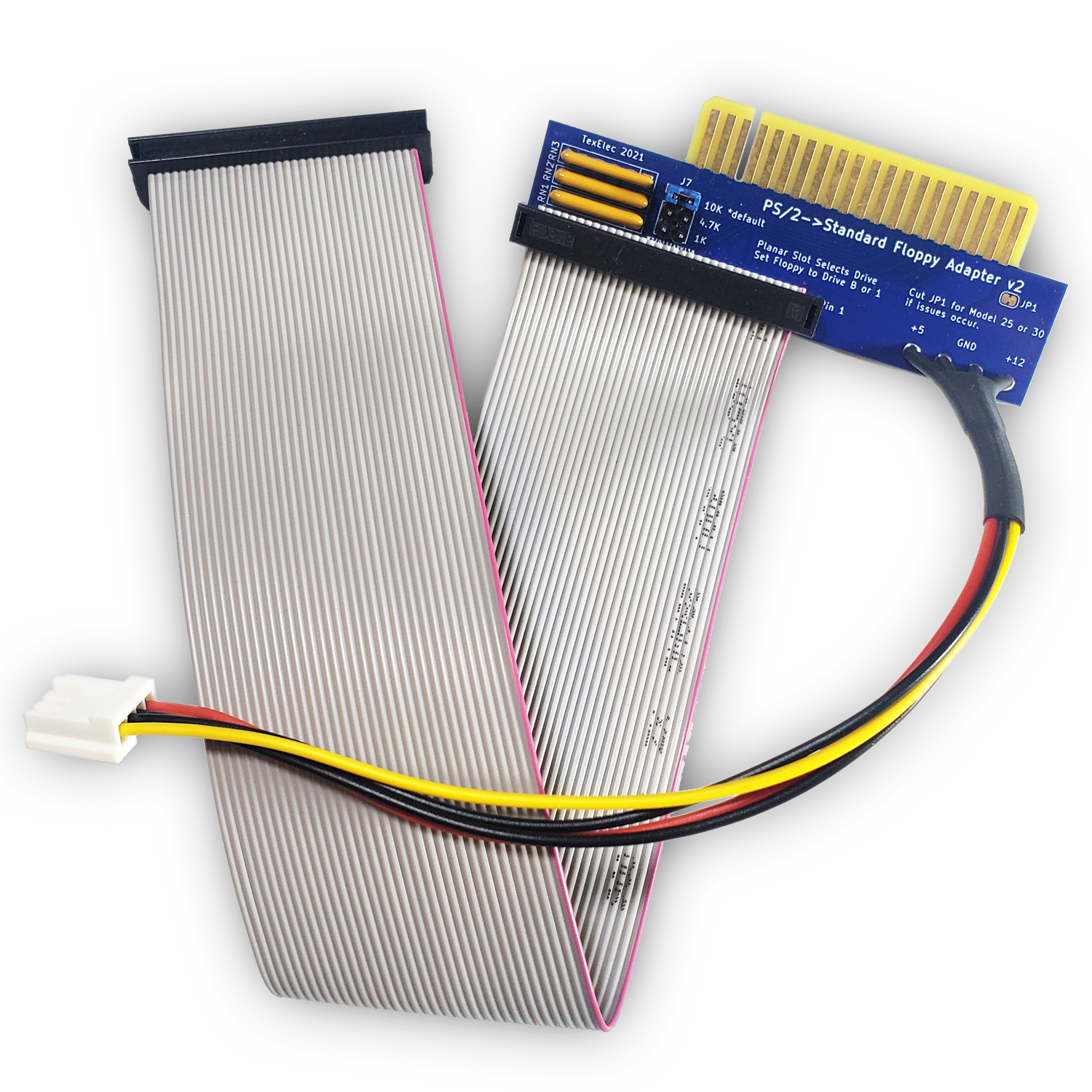steve314
Member
Hi all,
A few months ago I purchased an IBM PS/2 model 50 for $20 CAD. The floppy drive didn't work, so I've been developing a PCB to connect a standard floppy drive to the computer. At the moment, it consists of an edge connector and floppy connector, as well as some pullup resistors and a power connector(output for the floppy drive, so I don't have to modify the power supply).
It kind of works - when the computer boots, the floppy head moves back and forth, just like on the original drive. However, I get a floppy error and the system refuses to boot. Doing some research, I found one or two people saying that a floppy drive with jumpers is required. This is to change the logic level between CMOS and TTL(I'm not sure which one is the correct one for the PS/2 systems). Since the header requirement is rarely mentioned, I have a feeling a lot of drives work with both logic levels by default(but clearly mine don't!)
If anyone has a floppy drive with headers they are willing to give away(or maybe sell), that would be great. I need to confirm the board works before I start designing a revision with logic level shifting built in. Eventually, I would like to sell the boards alongside a 3D printed floppy drive mount. (I am also designing an MCA card, but that's another project entirely.)
I am also interested if anyone knows more about this. I was unable to find very much information on the specifics.
A few months ago I purchased an IBM PS/2 model 50 for $20 CAD. The floppy drive didn't work, so I've been developing a PCB to connect a standard floppy drive to the computer. At the moment, it consists of an edge connector and floppy connector, as well as some pullup resistors and a power connector(output for the floppy drive, so I don't have to modify the power supply).
It kind of works - when the computer boots, the floppy head moves back and forth, just like on the original drive. However, I get a floppy error and the system refuses to boot. Doing some research, I found one or two people saying that a floppy drive with jumpers is required. This is to change the logic level between CMOS and TTL(I'm not sure which one is the correct one for the PS/2 systems). Since the header requirement is rarely mentioned, I have a feeling a lot of drives work with both logic levels by default(but clearly mine don't!)
If anyone has a floppy drive with headers they are willing to give away(or maybe sell), that would be great. I need to confirm the board works before I start designing a revision with logic level shifting built in. Eventually, I would like to sell the boards alongside a 3D printed floppy drive mount. (I am also designing an MCA card, but that's another project entirely.)
I am also interested if anyone knows more about this. I was unable to find very much information on the specifics.

